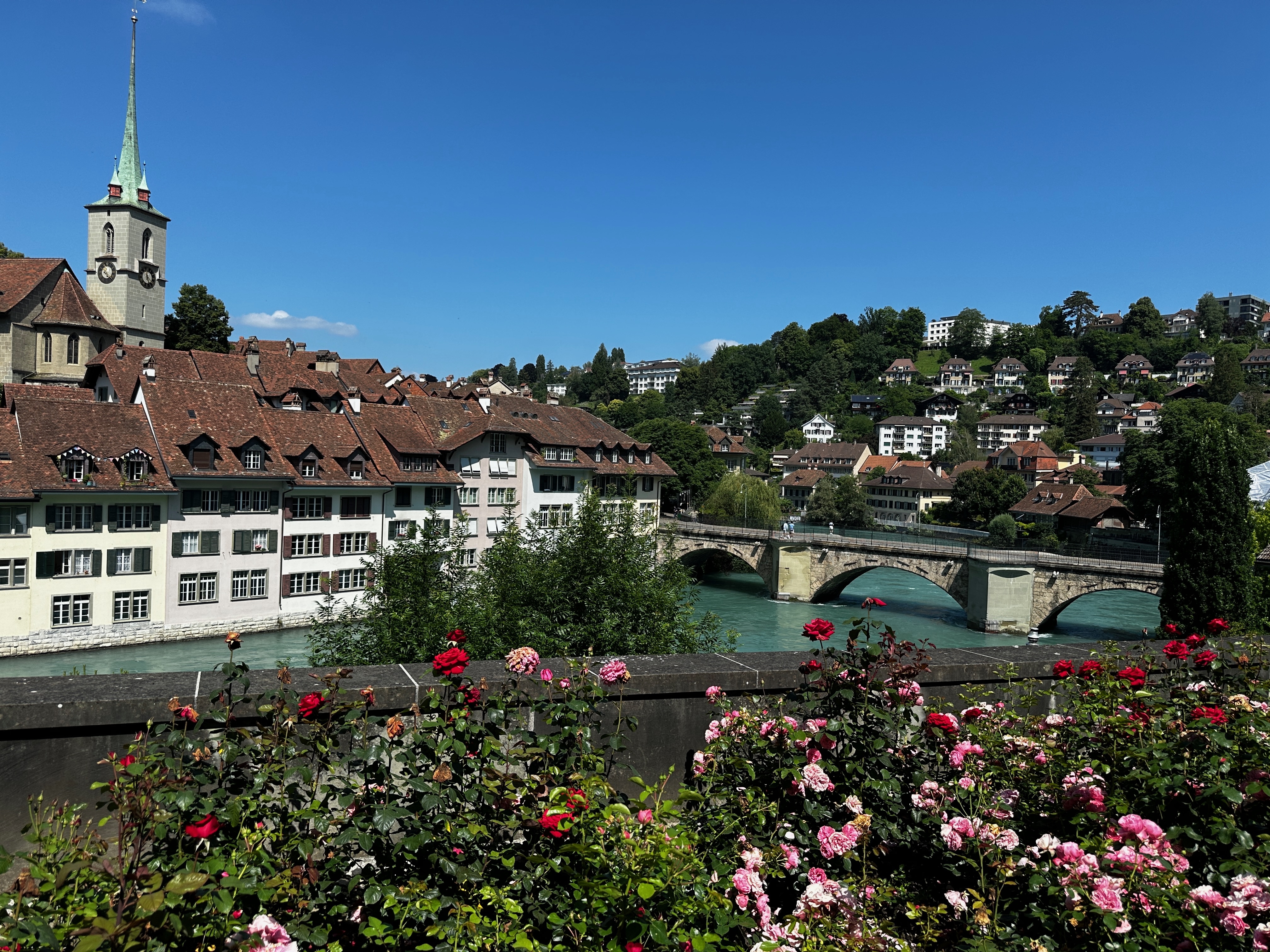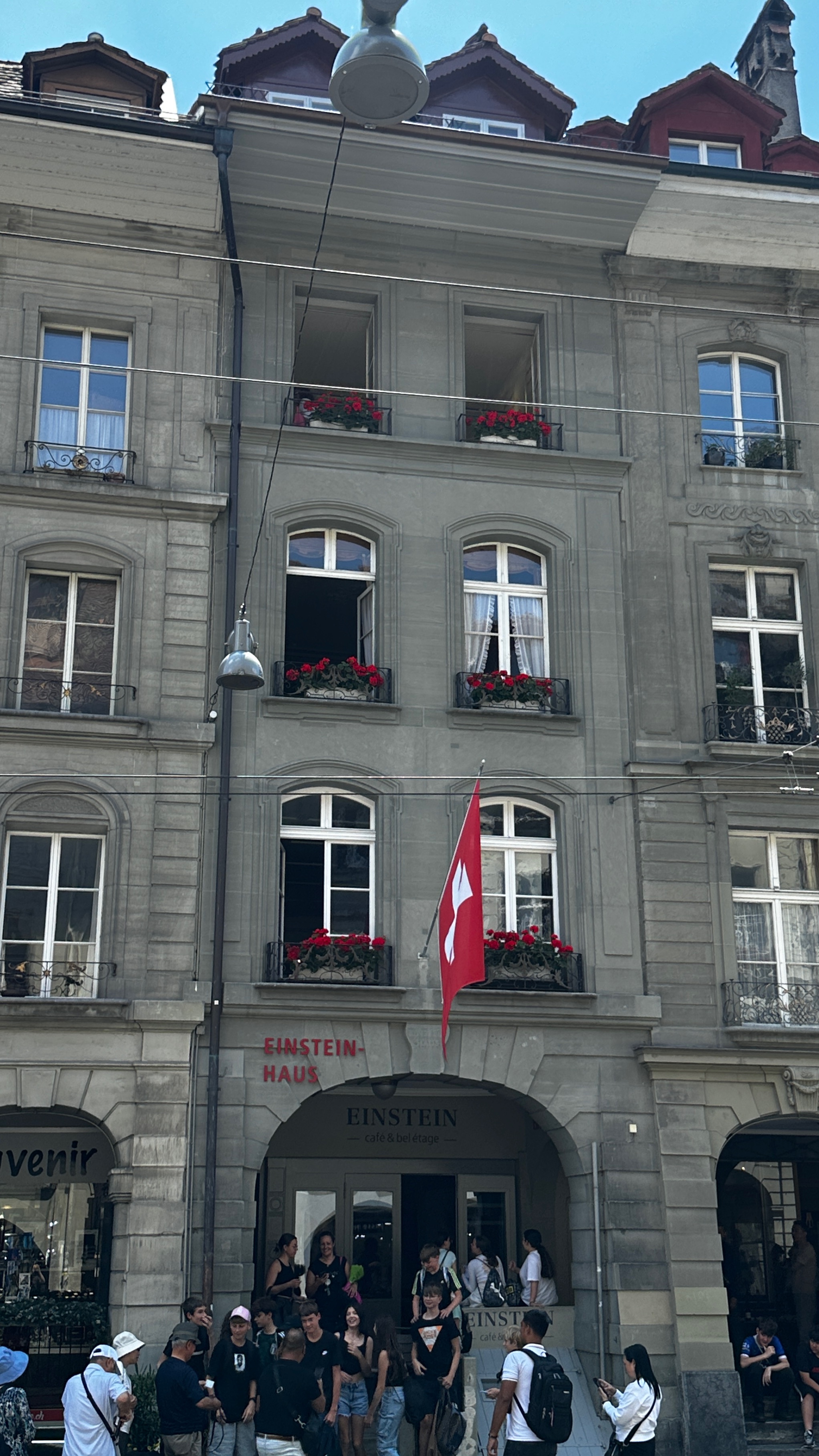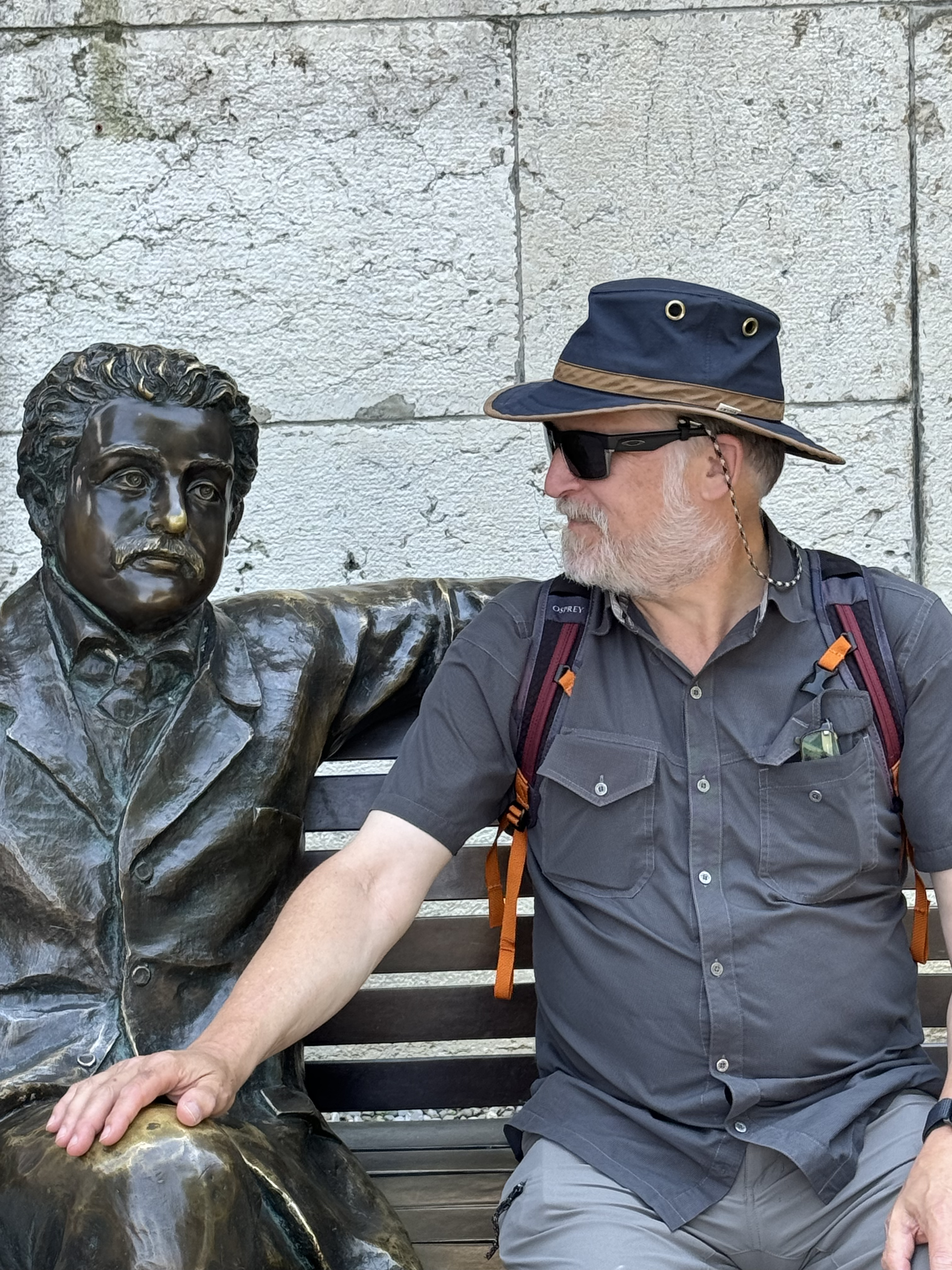My first visit: with Swisspeace!

How satisfying it is to meet people who fully live up to the values they espouse.
This week I began the actual work of researching existing models of peace and conflict centers, and soliciting ideas, designs, best practices and even dreams of what a center, designed from scratch, might look like.
But first, we traveled from Lake Como to Bern, Switzerland (picture above). We are making Bern our base for 8 days, and traveling to Basel, Zurich, and the Swiss Alps from there. Einstein developed his theory of relativity here, and so there are Einstein cafe’s, Einstein statues, Einstein pictures everywhere.
 Einstein’s house in Bern.
Einstein’s house in Bern. Chatting with Albert.
Chatting with Albert.
Monday I traveled to Basel to begin researching models for designing the new Emory Center for Peacebuilding and Conflict Transformation (PACT - a temporary name. I am taking nominations for a better name). I traveled to Basel and meet with the wonderful team at Swisspeace. I could not have asked for a better, more gracious host than Luca Willig, the co-head of the mediation program, who arranged a whole day’s meeting for me wiith various Swisspeace teams.
First, I met with the Luca and Julián Arévalo and Kathrin Däpp of the mediation program. Swisspeace is based on four pillars - Justice, Reparation, Recurrence, and Truth. Each is complex. Theey ask questions like - what are the norms in peace, what makes a “good peace”? What is peace’s value set? How do you create those values without asserting that Western values should dominate?
Swisspeace works in areas of conflict all over the world (highlighted in the map below).

Swisspeace works in many ways with these countries and situations. They have a fascinating division called “Dealing with the Past,” which concerns itself with issues of transitional justice. I had lunch with Claudia Josi and Tobias Hagmann from that division, along with Roland Dittli of Analysis and Impact and the COO, Mattias Boss. Dealing with the Past asks how you transition after trauma, after an authoritarian regime? What structures do you set up, and how do you cope with issues like missing persons, memorialization, preserving archives and documents?
They are also a research center, a training center, and they teach courses and run programs through the University of Basel (as described to me by Metka Herzog and Nathalie Orefice). Though not an academic unit in its own right, Swisspeace ended up being a treasure trove of information and ideas for the new center (as five pages of notes attest).
Also, they stressed the importance of bringing in nonconventional stakeholders to design the new center. Who should be at the table form the community, especially those whose voices have not been solicited before? Who does this work already - NGOs, social workers, community activists, artists? How can they be part of the center as well?
Most importantly, though, Swisspeace gave of their time. And they were gracious. I enjoyed each one of them, and never really thanked them for treating me to lunch and ice tea. What a wonderful start to my quest!
PREVIOUS



